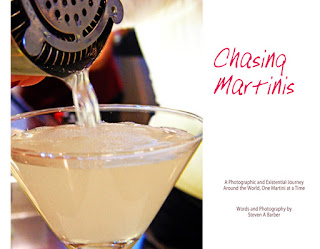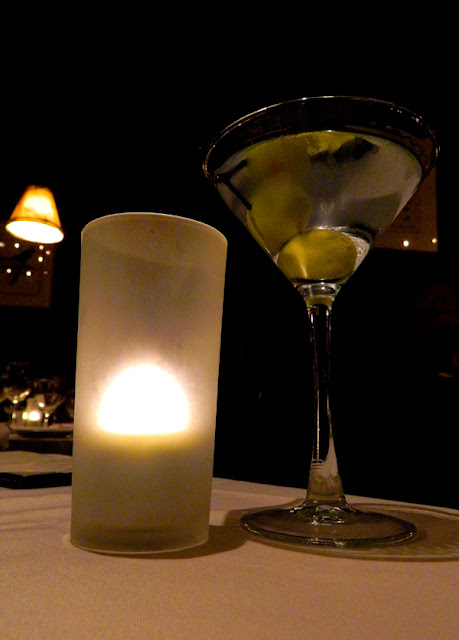Friday, June 8, 2018
Monday, May 28, 2018
Tuesday, March 13, 2018
Friday, March 9, 2018
THE BOPTINI
We invented this drink some years ago for an annual Jazz Angels education fundraiser originally named Boplicity, now called Jazz on the Patio.
The Boptini
1 1/2 oz Vodka
1 1/2 oz cranberry juice
1 oz 7-Up (or Sprite)
Splash of lime juice
Ice in a shaker, stir (do NOT shake!) ingredients and strain into martini glass.
Lime side car.
THE MARTINI CAPITAL OF THE WORLD
“The important thing is the rhythm. Always have rhythm in your shaking. Now a Manhattan you shake to fox-trot time, a Bronx to two-step time, a Dry Martini you always shake to waltz time.” - Nick Charles, THE THIN MAN
 |
| The Cosmopolitan |
 |
| Mesa Grill at Caesars |
The martini is an iconic drink and it seems that everyone wants a piece of it as part of their image. Bars, restaurants, nightclubs. Even cities.
But in my Not So Humble opinion, in almost every way Las Vegas would be my choice as the true Martini Capital of the World.
Let’s look at this.
It’s true that in the public mind the martini evokes Manhattan (no, not the drink, the city. This could be confusing). The image of the drink in the hands of business people, celebrities and other elements of the jet-setting cocktail-swilling life certainly echo the skyscrapers of Madison Avenue, Times Square and the Upper West Side. The three-martini lunch, now a thing of the past, was a mainstay of business throughout the fifties and sixties.
Martinis were a Manhattan “thing”.
 |
| Bellagio |
 |
| The Flamingo |
On the other hand, much of that imagery came to the public’s attention via movies and, to a lesser extent, television. So many of the films made during the 'thirties and 'forties and later presented the upper class - the Swells - as having a pitcher of martinis sitting to the side in the event anyone just happened to drop by. And in most cases, they didn’t even need visitors to down a martini or two. It was “what they did”. Cary Grant, Elizabeth Taylor, Rock Hudson, Audrey Hepburn, Lucille Ball and others often were at their celebrity coolest when pictured with a martini glass in their hand.
Those movies were made in Hollywood.
(Quick anecdotal aside: Rumor has it that the Chocolate Martini, long a favorite for chocoholics, was invented in 1955 by none other than Rock Hudson and Elizabeth Taylor. They were in Texas making the film Giant. Both loved martinis, and both loved chocolate, so they combined the two — I’m assuming it was a vodka drink, as I cannot fathom gin and chocolate together — and created the well-known and much delighted-in chocolate drink.)
 |
| Luxor |
 |
| Venetian |
London gets their claim with two words: James Bond. The MI6 super spy arguably made the drink far more mainstream and popular than any single other source of media. James’ order is so legendary that it’s become a part of the social vernacular, even though it’s the worst way you can order a martini.
But in my opinion it’s Las Vegas, Sin City, which gets the crown as the city most identifiable with the drink. The image of the Rat Pack isn’t complete without the trademark glass in their hands. Dean Martin’s entire act centered around his love of martinis. And women. But mostly martinis. Entire sets would focus on Martin’s supposed inebriation, and the rest of his cast-mates would themselves be digging at their drinks as the evening wore on.
 |
| Wynn |
 |
| The Mirage |
Throughout the Strip the martini became de rigeur, and came to represent the devilish and sin-filled life a visitor could indulge in while on vacation. Vegas was a place for hard working men and women to go and blow off some steam, away from their regular lives and surrounded by artifice, glitz and glamor as only Las Vegas could provide. And the martini was exactly the “prop” which found its way into the hands of the tourist, completing their image as carefree and fun loving.
Today’s Vegas martinis are excellent. It’s a standardized drink, so the variations permitted for a "true" martini are minimal, but the preparation can be decisive. The kind of glass it’s served with, the ambiance of the surroundings, the care with which the bartender creates his drink. The use of the proper garnish (olive for vodka, lemon twist of gin).
All contribute to the overall result, and in Las Vegas you’re dealing with some of the best mixologists in the country. It’s a little like competing for a television commercial in Hollywood. The number of genuinely talented competitors means most of the martinis on the Strip are going to be terrific, and the general availability of the drink - multiple locations throughout the casinos and clubs, means there are a LOT of martinis being served all over the city.
And to me that means Las Vegas earns the right to be The Martini Capital of the World.
Your mileage may vary.
Friday, February 9, 2018
BLACK AND BLUE
Once upon a time, a time not so very long ago, I deeply believed that the best way to treat your gin or vodka was to keep a bottle in the freezer. It made, so I reasoned, for an ice-cold martini when the time came.
But times and attitudes change, and I now understand that a room-temperature bottle...well, maybe slightly below...is best for creating a martini.
It has to do with chemistry. No, I'm not going to get all scientist on you, I'll leave that to the professionals. This is all about logic.
The creation of a particularly smooth martini depends upon a few things. First, as discussed in a previous chapter, is the way you mix it. Shaking, despite being the most popular and expedient way to make a martini actually makes it a bit bitter. Mixologists will tell you this is because the energetic splashing of liquids in the shaker "bruises" the alcohol. (Can you imagine getting a black and blue martini?) (Hmmm, this gives me an idea...)
The other three less-violent ways of mixing your drink make for a smoother and more palatable mixture. So we know that this is one way to soften the drink.
 Another, of course, is to select premium ingredients. The brand you select should appeal to your individual palate, and usually the higher-end ones have less of what I've referred to as the alcoholic sear which goes down your throat. We've all seen the old comedies where a character takes a shot of whiskey, grimaces and pronounces it "smooth" in a shaken voice that suggests it was anything but. So we need a good brand.
Another, of course, is to select premium ingredients. The brand you select should appeal to your individual palate, and usually the higher-end ones have less of what I've referred to as the alcoholic sear which goes down your throat. We've all seen the old comedies where a character takes a shot of whiskey, grimaces and pronounces it "smooth" in a shaken voice that suggests it was anything but. So we need a good brand.
But a third factor enters the picture, and it is subtly related to the other two: temperature of the liquor before mixing.
A room temperature liquor added to a shaker full of ice will have the effect of melting the ice. Well, yeah, you might say, no kidding. If you keep you liquor in the freezer that effect is greatly reduced. Also "no duh", right?
But part of a well-mixed martini depends upon that interaction to smooth out the alcohol by diluting it just a bit. Your drink becomes a combination of not just gin or vodka (or gin AND vodka in some cases), but the vermouth, lemon/olive and water. And each of them has an important impact on your taste buds and overall mouth feel of the drink. Remember, a martini is about the overall experience, not just the downing of a liquor. If that's your goal just do shots of iced vodka or gin and you're good to go.
But for a martini we want that perfect combination of taste, texture and mixture to give us the perfect experience. It takes no more time or effort, but the difference is palpable.
Try it. You'll thank me.
Oh, and by the way, speaking of a Black and Blue Martini...
THE BLACK AND BLUE MARTINI
(I vastly prefer vodka for this, the floral nature of gin isn't as suitable a match)
You'll need:
Cocktail shaker
Hawthorne strainer
Martini glass
Toothpicks
Ingredients:
Vodka
Ice
Spritzer of vermouth
Blue cheese
Black olives*
(*Commercially stuffed green olives are easily bought. You may have to stuff your own black olives for this.)
Stuff black olives with blue cheese to taste.
Fill cocktail shaker with ice, add four ounces of vodka. Set aside for a few minutes.
Spritz martini glass with preferred amount of vermouth (two to three squirts).
Cover cocktail shaker with Hawthorne strainer, pour vodka into martini glass.
Skewer three stuffed olives with toothpicks, use to lightly stir the martini in glass.
Serve and enjoy.
Cheers...
Tuesday, January 23, 2018
POCATELLO, IDAHO
Yes, even tiny Pocatello, Idaho is represented in my collection.
Cafe Tuscano, just off interstate 15.
Monday, January 22, 2018
Saturday, January 20, 2018
AUCKLAND, NEW ZEALAND
Earning an A for effort is Neptune's Seafood on the wharf in Auckland.
They don't normally serve martinis, but cobbled together this little number which filled the bill.
Well played, Neptune's. Well played.
Friday, January 19, 2018
LAS VEGAS - BELLAGIO
Petrossian Bar, main lobby. Bellagio, Las Vegas.
Nice place for a martini, piano music and people-watching.
Thursday, January 18, 2018
Wednesday, January 17, 2018
BOISE, IDAHO
Boise, you say?
Yes. Chandler's. Home of the Ten-Minute Martini.
It's smooth, cold and delicious. It just takes ten minutes, that's all.
Tuesday, January 16, 2018
Monday, January 15, 2018
Sunday, January 14, 2018
Saturday, January 13, 2018
Friday, January 12, 2018
WAIKIKI
To kick off the "Daily Martini", featuring martinis from around the world, we're traveling to Honolulu for an upper deck martini at the Marriott Hotel on Waikiki Beach.
They brought me the below in a plastic wine glass. The waitress shrugged, noting "we don't get a lot of martini requests here". Yeah, it's not a Mai Tai, that's for sure.
But an A+ effort, even if the glass is a little off.
Thursday, January 11, 2018
GIN...OR VODKA? THAT IS THE QUESTION....
 |
| Gin versus Vodka |
As I've mentioned before, the origin of the martini is under continual debate, with no resolution likely in our lifetimes. But gin, not vodka, was the original constituent.
Vodka arrived on the scene much later, and really didn't come into its own as a martini ingredient until the mid-fifties. Then, with the advent of James Bond, vodka began its ascendence to the point where, today, it is the gin martini which is the exceptional ingredient, not the rule.
 |
| OXO Bistro, London |
 But for the consumer - by this I mean the person consuming the drink, not the overall retail purchaser - there's a significant difference in the flavor between the two liquors, so the choice of which one to order is very much in the drinker's hands. Or mouth, as the case may be.
But for the consumer - by this I mean the person consuming the drink, not the overall retail purchaser - there's a significant difference in the flavor between the two liquors, so the choice of which one to order is very much in the drinker's hands. Or mouth, as the case may be.Gin is, perhaps obviously, a much more flavorful liquor. Some actually think that vodka is essentially tasteless, which it isn't. Vodka is a very subtle flavoring, and depends far more heavily upon texture and alcoholic "burn" for its impact on the palate. It also mixes much more readily, which has had the effect of making vodka the choice liquor for the wide array of "-tini" drinks available both in bars as well as flavored alcohol drinks in the supermarket liquor section.
Gin is distilled from juniper berries. It has an herbaceousness which is essential to its taste. In this
I've found that the gin drinker places a much higher priority on individual brands than do vodka drinkers, and for good reason. Gin, being an herbaceous, botanical drink, is heavily impacted by what our friends in the wine industry might describe as "terroir". Ground. Surroundings. "Earth". But in the case of gin it's less about the dirt than the contents of any surrounding brush. A British brand, The Herbalist, is, for example, specific that much of their botanical flavor comes from the fact their juniper comes from a boggy area, and therefore contains a more earthy, grounded flavor. (It's quite good. My attempts to describe it are clumsy, at best.) Other gins may be more flowery or grassy, depending upon origin.
 |
| Nick's, Washington, DC |
In my opinion, a gin martini requires a slightly higher percentage of maybe 5 to 1 or even 4 to 1 for the people who like their drinks "wet".
A vodka martini, on the other hand, benefits from a lighter touch with the vermouth, lest the vermouth overpower and become the solitary flavor in your drink. Some suggest 10 parts vodka to 1 part vermouth is correct.
(And there are people who prefer it differently, and more power to them. Every person will have their own guidelines, so the person ordering their drink ought to feel empowered to order it their own way. Friends of mine often grin when I give a waiter my specific instructions, but if I'm paying $15 or more I'm certainly going to want it my way, not a bartender's standardized presentation.)
 |
| Javier's, Newport Beach |
Vodka, most frequently a potato-distilled liquor, tends to be a far more subtle flavor, which is why most people assume it has none. Its impact is in texture and burn, as noted above. Texture meaning whether it feels crisp or oily in the mouth. For example Tito's is a crisper vodka, while Grey Goose has an oilier texture. Add to that the level of alcoholic burn - the slight searing on the tongue and the back of the throat - and you have a more textural experience than the flavor-filled gin martini.
(True martini stalwarts insist that the best ratio is ten parts of either gin or vodka, with a gentle toast to the unopened vermouth bottle across the bar. With all due credit to Sir Winston Churchill for that particular observation.)
 |
| The American Bistro, Palm Springs |
And there are other considerations.
Olives, which are an oily and salty ingredient, do far better complimenting a vodka martini than a gin in my opinion. My typical orders might be something like "vodka martini, dry, olives" or "gin martini, gentle on the vermouth, lemon twist". That lays into my palate, and gives me the drink I want to pay for.
But, as noted, your mileage may vary.
Subscribe to:
Posts (Atom)





















